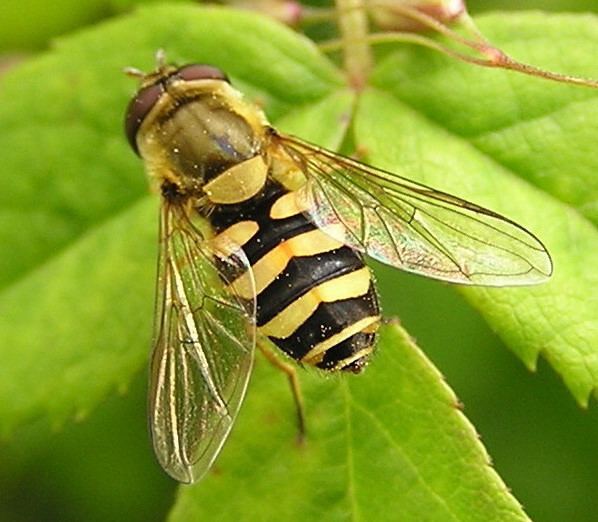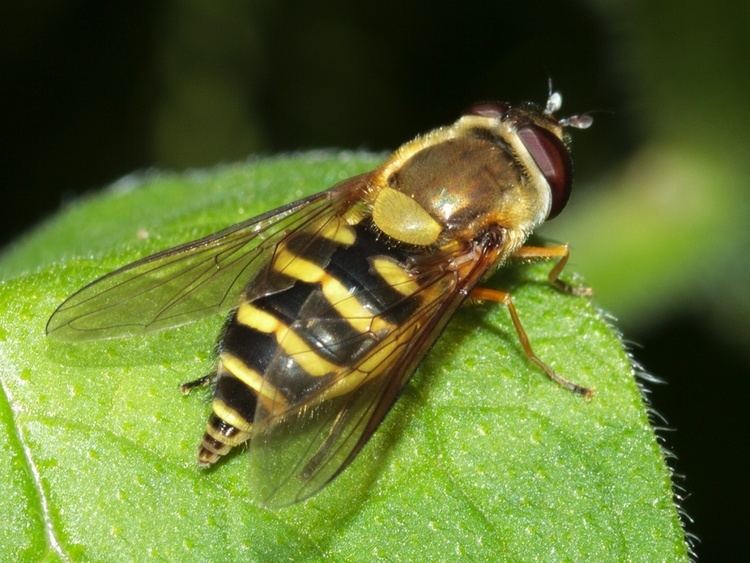Order Diptera Higher classification Syrphus | Family Syrphidae Scientific name Syrphus ribesii Rank Species | |
 | ||
Similar Syrphus, Hoverfly, Insect, Fly, Syrphus vitripennis | ||
Hoverfly insect preening in sunshine syrphus ribesii cool stuff close view
Syrphus ribesii is a very common Holarctic species of hoverfly. Its larvae feed on aphids. In common with many other species of hoverfly, males have the eyes meeting on the top of the head, whilst females have their eyes widely separated.
Contents
- Hoverfly insect preening in sunshine syrphus ribesii cool stuff close view
- Description
- Distribution
- Biology
- References

Adults are very similar in appearance to Syrphus vitripennis and Syrphus torvus. Females may be distinguished by the former having entirely yellow femorae, and from the latter by having no hairs present in their eyes. Males also have bare eyes, unlike S. torvus, but are extremely similar to S. vitripennis, differing only in having some black hairs present on the hind femur and in having the second basal cell of the wing entirely covered by microtrichia. The male genitalia and the larva are figured by Dusek and Laska (1964).

Description

External images. Frons is posterior to the lunulae, shiny black. Sternites have lateral and median black marks. Male femora 3 is black for basal 2/3. Femora 3 is yellow. Lateral margins of tergites are black except at the ends of the yellow bands. The male genitalia and the larva are figured by Dusek and Laska (1964).
See references for determination.
Distribution
Palearctic: Fennoscandia south to Iberia and the Mediterranean basin, Ireland eastward through Europe into Turkey, European Russia and Afghanistan. Also ranges from Urals to Siberia and Russian Far East to the Pacific coast (Kuril Isles) and Japan. Nearctic: Alaska southward to Central USA. Highly migratory.
Biology
It is synanthropic, occurring in farmland, orchards, horticultural land, suburban gardens and parks. Also in deciduous and coniferous forest. It flies March to mid-November. The larva feeds on aphids on various herbaceous plants. Adults feed on nectar and pollen. For a list of flowers visited, see de Buck (1990). Boyes et al (1971) show that over much of Europe, there are two chromosome races of S. ribesii, one with 2n = 8, the other with 2n = 10.
